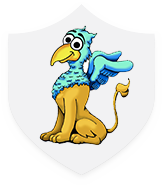Online Safety
At Griffin Park Primary School, we are committed to ensuring that all children stay safe online and we aim to prepare them for a future digital world where they can remain safe online, and where they know what to do in difficult situations online.
As part of the Computing curriculum, every half-term, every class spends a lesson focusing on a different aspect of online safety. This links with PSHE lessons on e-safety.
We hope that parents can support us in this aim – please read some of the guidance on this page, which provides useful tips for helping to keep your child safe when using the internet.
-
NSPCC Guidance The NSPCC provides really valuable and useful advice for parents about Online Safety, focusing on online games, social media and internet-connected devices. Please take some time to read some of their guidance so that you can help to protect your child online.
Child Safety on YouTube
What is the problem?
You may have seen news reports about inappropriate children’s videos on YouTube.
These are videos that, at first, appear to be for children, as they include cartoon characters such as Peppa Pig, or characters from Disney films such as Frozen. However, later on the videos become violent or disturbing. One, for example, shows Peppa Pig being tortured at the dentist.
The videos can appear in YouTube search results when children look for genuine children’s videos.
YouTube says that such videos will be age-restricted if they are reported by users, so they cannot be viewed by anyone under 18.
What safety options are there on YouTube Kids?
The YouTube Kids app automatically filters out inappropriate content. However, YouTube explains that “no algorithm is perfect” and “your child might find content you don't want him or her to watch”.
To help protect your child in YouTube Kids, you can set parental controls and change settings: tap the ‘Lock’ icon in the bottom corner of any page, enter your custom passcode and click ‘Settings’. Here you can:
- Turn the search function off, so your child can only see recommended, curated videos under each category on the home screen: toggle ‘Search’ to off
- Set a timer to limit how much time your child spends on the app: select ‘Timer’ and use the slider bar or the plus and minus icons to set a time limit, then tap ‘Start Timer’
You can also block videos or channels you don't want your child to watch:
- Tap the 3 dots (‘more’) at the top of the video, tap ‘Block’ and select ‘Block this video’ or ‘Block this channel’ to block the whole channel associated with the video
- Tap ‘Block’ again, then enter the numbers you see written on the screen, or your custom passcode
To report content to YouTube that you think is inappropriate, use the ‘flagging function’: tap the flag icon next to a video or comment and select your reason for flagging.
The app does have advertising, but YouTube says it restricts adverts that aren’t child-friendly.
What safety options are there on YouTube?
Turn on ‘restricted mode’
This hides videos that may contain inappropriate content. YouTube says that “no filter is 100% accurate, but it should help you avoid most inappropriate content”. To do this:
- On the website: click on the icon in the top-right corner that represents your YouTube account; in the drop-down menu look for ‘Restricted Mode’
- In the app: tap Settings, then ‘Restricted Mode Filtering’, and turn it on.
Flag inappropriate videos
If you think a video or a comment on a video is inappropriate, you can use the ‘flagging feature’ to prompt YouTube staff to check it and decide whether to block or restrict it:
- Tap or click the flag icon next to a video or comment and select the reason for flagging.
Flagged content is constantly reviewed to check for any violation of YouTube’s Community Guidelines.
How else can I help ensure my child’s safety online?
The tips below will help you to set rules for your child about accessing videos on the internet and their online behaviour, and support them to understand the risks and what to do if something happens.
- Try to have your child in the same room as you when they are using the internet, and discourage them from using headphones.
- Chat to your child about what online videos might not be suitable for them to watch and share.
- Regularly check the history of videos they have watched online for anything inappropriate, or create a playlist for them.
- Encourage your child to tell you if they see something they find worrying or nasty.
- If your child wants to share a video they have recorded, check they get permission from anyone who features in it before they upload it.
- Tell your child not to give out any personal information or anything that can identify them, such as a school uniform or street name.
- Regularly check comments made on your child’s videos. Talk to your child about how they could receive nasty or negative comments from other people, and what they should do if this happens.
- If another YouTube user posts a video of your child or shares personal information without consent, you can ask for this content to be removed by using YouTube’s privacy complaint process.
